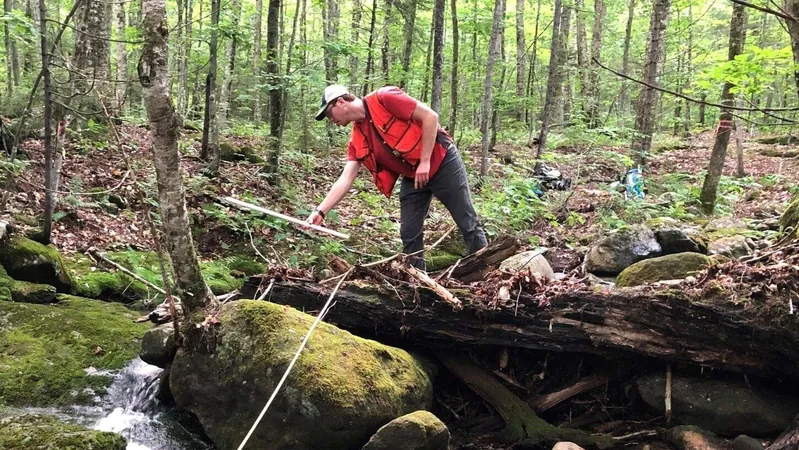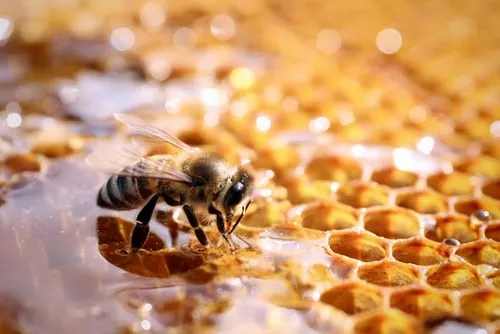
Surprising Discovery: Dead Trees Are Secret Carbon Saviors for Our Planet!
2025-03-31
Author: William
Introduction
In the fight against climate change, living trees are well-known heroes, absorbing carbon dioxide from the atmosphere. However, a groundbreaking study from researchers at the University of Vermont (UVM) reveals that dead trees also play a crucial role as carbon reservoirs. Surprisingly, large, fallen trees found in streams are storing significant amounts of carbon, and this store is increasing over time.
The Severity of the Crisis
Dr. William Keeton, a professor at UVM and co-author of the study, highlighted the severity of the carbon emissions crisis: "About 20% of global annual greenhouse gas emissions come from land use and deforestation." But the study illustrates that forests can also be powerful allies in carbon sequestration. Keeton had long suspected that submerged wood in old-growth forests was crucial for carbon storage—his suspicions were confirmed.
Significant Findings
"Old-growth forests stored four to five times more carbon in the wood lying in the streams compared to mature forests," said Stephen Peters-Collaer, the study's lead author and graduate student at UVM. The research unveiled a startling fact; the carbon stored within dead wood in streams can be 50% to 60% larger than that found in fallen trees on the forest floor, highlighting the often-overlooked significance of these aquatic ecosystems.
Role of Fallen Trees in Streams
The study, published in the journal *Ecosystems*, emphasizes the importance of large, downed trees along waterways. These trees act as slow-releasing carbon sinks due to their dense structure, which hinders decomposition, especially when submerged. Fallen logs often create natural dams in small streams, trapping wood and organic materials and enhancing their carbon-storing capabilities.
Importance of Headwater Streams
Remarkably, headwater streams—though small—drive the health of entire river systems, comprising 70% of total river miles and usually remaining undeveloped due to their upland locations. This underscores their potential as vital carbon sinks.
Research Methodology
Despite the importance of both forests and streams, prior research typically focused on one without addressing their interconnection. Keeton noted that this dynamic relationship is crucial in understanding how carbon cycles between trees and waterways: "We must consider these systems as not static but rather continuously evolving."
Field Study Results
Over three summers, UVM researchers and undergraduate field crews analyzed 4,500 meters of headwater streams at Hubbard Brook, measuring the size of wood in streams to calculate the carbon held within. They discovered that forests transitioning to old-growth conditions were accumulating more wood in streams than what was lost due to decomposition. If the recruitment of new wood exceeds the loss, the total carbon stored continues to rise—particularly with the role of large trees in this process.
Implications for Landowners
This message is particularly significant for landowners in Vermont, where a whopping 80% of forested land is privately owned. Understanding how to integrate carbon storage and natural climate solutions into land management strategies can empower the community towards sustainable practices.
Future Prospects
As mature forests like Hubbard Brook continue their recovery from 19th and 20th-century timber clearing and agricultural land use, researchers project a substantial increase in carbon storage in these areas. Keeton expressed hope for the future, stating, "We can anticipate the carbon pool in these forests to expand significantly, providing critical insights that were previously missing from global carbon models. This knowledge is invaluable for developing natural climate solutions."
Conclusion
In summary, the study showcases the hidden potential of dead trees as essential components in our effort to combat climate change, reinforcing the idea that even nature's deadwood serves a critical purpose in storing carbon and supporting a sustainable planet. As we deepen our understanding of these ecosystems, we can better plan for a greener future.









 Brasil (PT)
Brasil (PT)
 Canada (EN)
Canada (EN)
 Chile (ES)
Chile (ES)
 Česko (CS)
Česko (CS)
 대한민국 (KO)
대한민국 (KO)
 España (ES)
España (ES)
 France (FR)
France (FR)
 Hong Kong (EN)
Hong Kong (EN)
 Italia (IT)
Italia (IT)
 日本 (JA)
日本 (JA)
 Magyarország (HU)
Magyarország (HU)
 Norge (NO)
Norge (NO)
 Polska (PL)
Polska (PL)
 Schweiz (DE)
Schweiz (DE)
 Singapore (EN)
Singapore (EN)
 Sverige (SV)
Sverige (SV)
 Suomi (FI)
Suomi (FI)
 Türkiye (TR)
Türkiye (TR)
 الإمارات العربية المتحدة (AR)
الإمارات العربية المتحدة (AR)